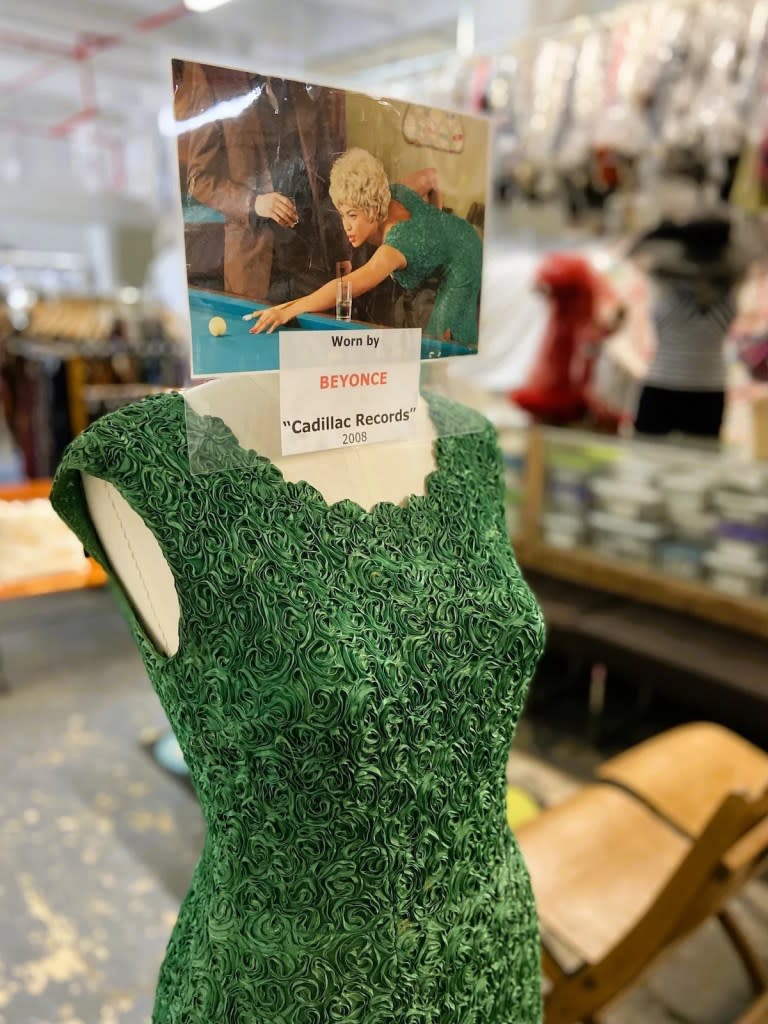Before the dual strikes this year, Faux Library Studio Props in North Hollywood would typically fill up to 20 trucks a day that were picking up props for big Hollywood TV and film projects like “Top Gun: Maverick.” But now, CEO Marc Meyer says the company only sees one truck picking up props — for a TV commercial.
Faux Library Studio Props’ revenue has since dropped from about $150,000 a month to only $10,000, Meyer told TheWrap, and he laid off all 14 of his employees back in June. “If the actors strike is not resolved in a short time, we may be forced to sell some props,” he said. “It is straining my resources to the snapping point.”
Over the past six months, economic losses related to the Hollywood labor disputes have surpassed $6 billion nationally, Kevin Klowden, global strategist at the Milken Institute, estimated. Los Angeles accounts for nearly half of those losses, while New York and Atlanta are following “much further behind,” he said.
The motion picture and sound recording industries have lost 44,000 jobs since the Hollywood strikes began in May, according to the U.S. Bureau of Labor Statistics’ October jobs report, released Friday.
It is straining my resources to the snapping point
Faux Library Studio Props CEO Marc Meyer
The worst-hit industry workers are production employees who are out of a job and whose ability to make rent and remain in places like LA or New York is under threat, Klowden told TheWrap. But also affected greatly, he said, are small and medium-sized businesses that depend on entertainment for their income and don’t have an easy way to make up the revenue.
New York City’s film and TV industry supported about 185,000 jobs, $18.1 billion in wages, and $81.6 billion in total economic output in 2019, according to a 2021 study conducted by the New York City Mayor’s Office of Media and Entertainment. Meanwhile, California’s film and TV industry has supported over 700,000 jobs and nearly $70 billion in wages for in-state workers, according to the California Film Commission.
Hollywood’s Shutdown Hits Hard
Helen Uffner, the owner of New York-based Helen Uffer Vintage Clothing, a shop that primarily rents to period TV shows and films, has seen business come to a near halt, aside from the occasional theater or commercial client. Since May, she estimates that her total revenue has dropped at least 80% to 85%.
In February, Uffner’s business moved to a new Long Island City location — its second move in a year — downsizing from over 8,000 square feet to less than 5,000 square feet. Before that, the business was shuttered for six months during the COVID-19 pandemic.
“By the time we had unpacked our 50,000-plus pieces, we had barely begun to settle in and begin doing business again when the strikes began,” she recalled. “We have been completely closed since, and only open on the rare day that a client calls in advance.”
Typically, Uffner’s business works on up to 45 films and 40 TV productions per year. But with production on hold, it has worked on just three films and six TV productions this year, including the films “Here” and “The Fog of War,” TV shows “What We Do in the Shadows,” “Bass Reed,” “The Boss,” “Life and Beth,” and skits for “Saturday Night Live” and “The Late Show with Stephen Colbert.”
During the strike, Uffner has continued to pay rent, gas, electric bills and employee fees on days when the business has a client. In order to stay afloat, she has been dipping into her retirement savings and has even started to sell some of her personal collections to keep commercial collections intact.
“I do not want to divide the collection, but I have to consider it,” she added.


(Photo courtesy of Helen Uffner)
Jessica Heyman, the owner of Art For Film, which has supplied artwork for productions such as “Succession,” “Only Murders in the Building” and “The Morning Show,” had expanded her business to the point where it was running out of warehouse space.
About a month before the Writers Guild of America (WGA) strike began, she decided rent a warehouse that was three times the size and cost – which she now says was a “very ill timed and incredibly expensive” move.
Since May, Heyman has seen around a 91% drop in sales, amounting to hundreds of thousands of dollars. She and her husband, who have two daughters that are applying for college next year, are dipping into their savings in order to keep the business afloat.
“Our sales volume in September, the entire month, equated to probably what we would normally bill in a day,” she said.
Unlike during the COVID-19 pandemic, Heyman pointed out that businesses have been unable to rely on financial support from the local and federal governments during the strikes.
“Everyone’s just waiting and trying to cut losses as much as we can,” she said.


A Financial Hangover
Even if the SAG-AFTRA strike is resolved quickly, Klowden expects the financial hangover from the labor dispute to last for up to a year.
He anticipates a “massive rush” to try and hire people, secure sound stages and equipment and make sure existing financing lines are still available. He also said the lengthy process of rehiring workers, ranging from actors to camera operators to even craft services, could “create a massive backup in productions that will last months.”
Meanwhile, businesses impacted by the strike will face months of lost revenue and potential rent issues and will need to attract workers back who have either temporarily left major cities, the industry or both, Klowden said.
Danni Sapp of Sassy Craft Services in Beverly Hills would make $6,500 to $8,000 per month on commercial productions for major brands like Verizon and Best Buy, working about two to three jobs a week. Now, she only makes about $1,500 per month working around one job — with $300 to $400 in expenses. To make up the difference during the shutdown, she’s been working as a pilates instructor.
“I know a couple of people that have just retired [from craft services] completely because this was just too much,” she added. “I’m planning on leaving the industry completely. Anything that comes now I’d be grateful for, but aside from that I’ve pretty much already made plans to transition into something else.”
Uffner, who expects a production restart to take several months, acknowledged that she would need to rehire staff and interns to meet customer demand, but that she currently can’t afford to. While she is considering expanding her client list by renting to special event companies and private people to make up for lost revenue, she said she may decide to just sell her business and retire after 46 years.
“This is a business likely to thrive as part of larger production studio facility, better situated to hire additional staff, expand the client workload even further and have the knowhow to install a more sophisticated inventory system,” Uffner said.
But for Heyman, shutting her doors isn’t an option. She is her family’s primary breadwinner with two daughters set to begin applying for colleges next year.
“I’ve literally just signed a five year lease in April so I’m on the hook for that,” she added. “I have no option but to just keep going deeper and deeper into debt.”
She also feels a responsibility to continue to help over 100 artists who her business shares nearly half its profits with.
I’m planning on leaving the industry completely.
Danni Sapp of Sassy Craft Services in Beverly Hills
Heyman says she’s started to sublet part of Art For Film’s space in order to bring overhead costs down. She’s also trying to work more with different clientele, such as hotels and hospitals.
“It’s become glaringly apparent that I cannot be completely dependent on this industry anymore because I just don’t think that they’re reliable,” she added. “I have to diversify.”
When the strike does eventually end, Heyman anticipates that ramping up her business back to pre-strike levels will be a “little bit bumpy.” She said she’s prepared to “handle it, but I feel like it’s probably just going to be more on my plate and it’s just really depressing.”
Reaching a Resolution
While the WGA ended its 148-day strike last month, after ratifying its new contract agreement with the Alliance of Motion Picture and Television Producers, negotiations continue between the AMPTP and SAG-AFTRA, which has been on strike since July 14.
SAG-AFTRA issued a response to the AMPTP after the organization delivered what it said would be its “best, last and final offer.” In a message to members on Monday evening, the actors union said it is “determined to secure the right deal and thereby bring this strike to an end responsibly.”
“There are several essential items on which we still do not have an agreement, including AI,” the guild added. “We will keep you informed as events unfold.”
Heyman, who supports the strikes and understands the “very legitimate demands and concerns” of the writers and actors, blasted the major studios for failing to understand how far the economic ripple effects of the dispute have reached.
“It’s not just the writers and actors, it’s the entire industry. It’s the art departments, camera people, lighting,” she said. “And these are not people who have deeper pockets…people are really, really hurting.”
The post Six Months of Strikes: Small Businesses Are Drowning in Hollywood’s Production Shutdown appeared first on TheWrap.



